What would you say is the most effective armor in fiction? Power armor? Magical barriers? Superman’s invulnerable skin?
Nah. It’s
Plot Armor. The invisible, intangible protection awarded to characters and things that functions mainly by virtue of their importance to the story, rather than any particular logical reason within the story itself. Sometimes it makes sense that Indiana Jones survives a particular bit of danger. Sometimes you have to just not think about him getting dragged under a speeding truck and not showing so much as scuffmarks on his trousers as a result. You don’t think too hard about how he survives traveling from the coast of Africa to somewhere in Indonesia on the outside of a German submarine. He’s the hero. Heck, his name is in most of the movie titles (or all of them, now that
Raiders of the Lost Ark is marketed as
Indiana Jones and the Raiders of the Lost Ark)
. Being the hero hath it’s privileges, including the occasional bout of invulnerability because the writer says so.
Now, although this comic is not titled
Susannah Zane and the Zombie Ranch, I do recall a reader once mentioning that they never felt particularly roused by any scene putting our intrepid young ranch owner in danger, because she benefited from Plot Armor. As the main protagonist, she’d obviously pull through whatever perils were occurring, so there was nothing being killed in such scenes except time.
As a writer there’s not much to say in response to that, unless perhaps you’re a Joss Whedon or George R. R. Martin who takes a perverse delight in killing off characters the audience doesn’t expect will be killed. Oh, you don’t get concerned because obviously I won’t do anything to such a beloved or important member of my cast? We’ll see about THAT, buddy! Gonna shake your preconceptions of narrative arc and hero’s journeys right up!
Mind you, the “anyone can die” school brings its own set of problems, such as, for instance, Dawn having to abandon the
Song of Ice and Fire books after the third or so as the characters she kept investing her care in kept meeting dire ends. Yes, the Red Wedding is a shocking scene, but at what cost? By the time we get to the end of the fifth book, the betrayal and murder of yet another major protagonist becomes almost an exercise in nihilism that had me wondering if there might be better stories to spend my time following. It didn’t help that much of
A Dance With Dragons felt to me like GRRM was casting about randomly looking for directions to take his tale, as if the sacrifice of so many of his protagonists had left him as unanchored as his audience.
As noted above, the TV Tropes version of Plot Armor is specifically about a major character being able to survive things they really shouldn’t, but it’s more useful to me to discuss it as a wider definition. The idea that the invulnerability to death or lasting harm of a main protagonist somehow makes for boring or predictable fiction seems flawed, just based on observable evidence that the “anyone can die” type of story — outside of certain genres like horror — has always seemed to be more of the exception than the norm. That’s why Whedon and Martin can shock us, after all — by subverting the expectation. What was most interesting to me about the reader comment I mentioned is that it represents a valid viewpoint, but a viewpoint you really don’t hear expressed much. Most of us (myself included) seem to be just fine with biting our nails in suspense as Indy is running for his life through a series of deadly traps. I turn around and concoct scenes of my own putting Suzie in mortal peril and the comments section more often than not has at least one reader on the edge of their seat as they wait for the next installment. It doesn’t matter that we’re 99.99% sure they’ll make it out of the situation intact — as long as we have any care for the character in the first place, that remaining 0.01% is enough to grip our attention.
Perhaps it’s in a sense like the experience of a roller coaster. I don’t know the exact accident statistics on a well-maintained roller coaster.
This site claims your chances of a fatal experience are 1 in 300 million, and regardless I would guess most people don’t go on roller coasters on the off chance that an accident happens. Instead they go to get an adrenalin rush thrill high of danger while remaining in a controlled and (mostly) safe environment. The plot armor surrounding a character could serve a similar function, allowing us to gasp and worry as Flash Gordon dangles over a cliff, but having the reassurance deep down that he’ll be fine. Does it take away the thrill of a roller coaster to know that it’s astronomically unlikely you won’t walk away from it when it’s over?
The “anyone can die” model seeks to emulate the randomness and senselessness that death and suffering in our real world all too often exhibit; and while its effects can be powerful gut punches delivered to an audience seeking the safe thrill high of following their heroes, there’s no denying that it can leave behind a certain feeling of being cheated once the shock wears off. On those occasions that heroes die, they’re expected to die in meaningful ways, ways befitting their elevated place in the narrative. Otherwise, it’s the roller coaster flying off the track, the violation of an unspoken standard contract between reader and author. Best to make sure the results are worth it, and it’s not just a cheap shock tactic to be followed by an ultimately hollow aftermath where both author and audience find themselves lost. Plot Armor for your protagonist(s) might be one of the oldest storytelling tricks in the book, but because of that very weight of centuries of tradition and audience satisfaction, it’s something to strip away only with the utmost of care.
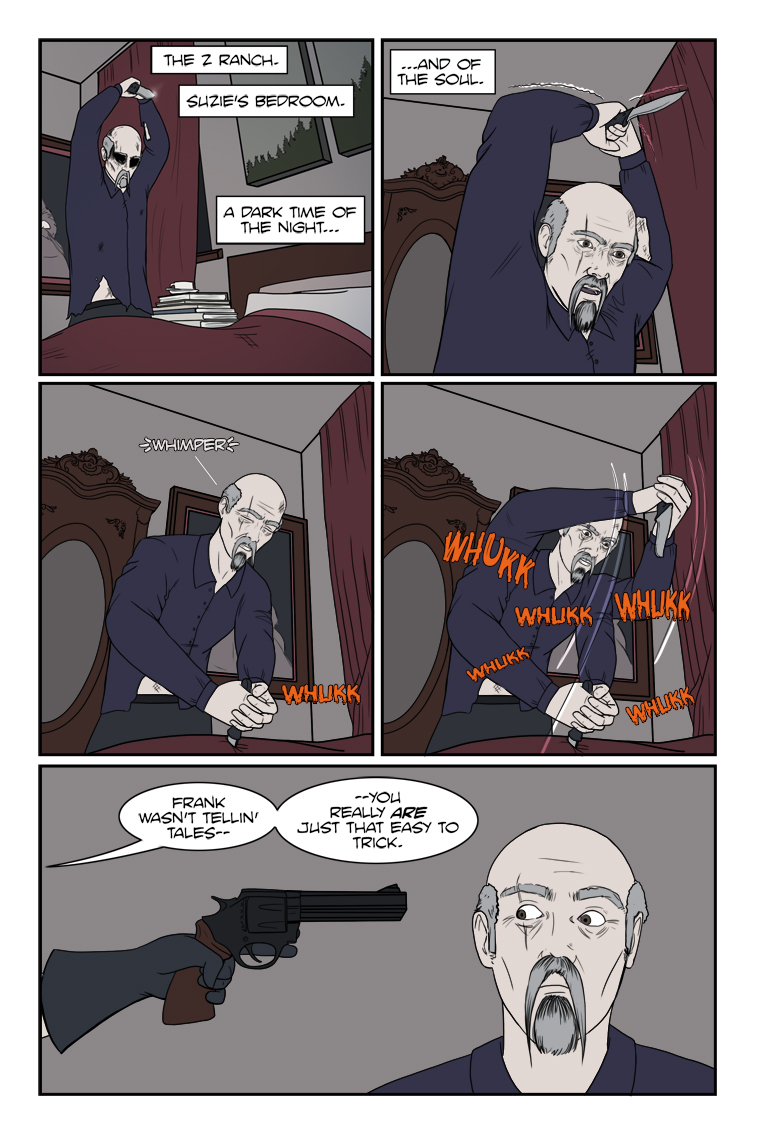

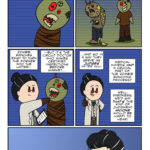
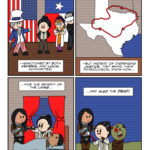
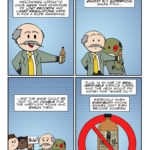
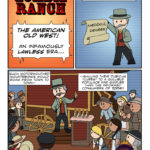
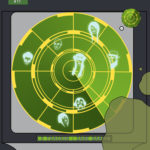
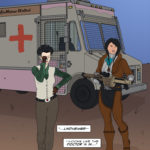
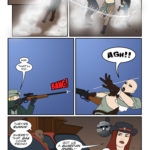
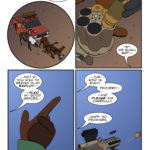
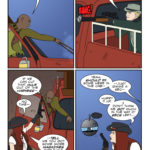
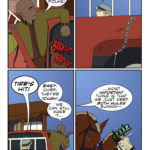
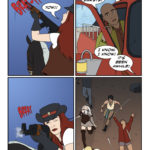
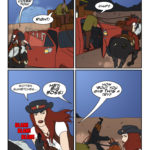
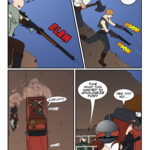
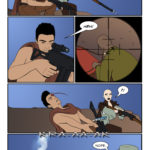
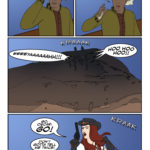
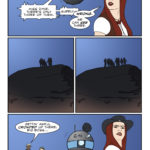
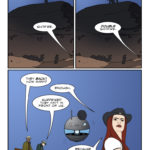
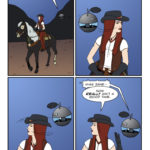
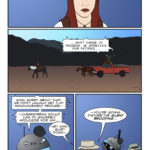
8 thoughts on “540 – Trick Hello”
Scarsdale
Called it, she figured he’d do this, if by choice or by zombie voodoo. I’m sure the “friendlier” questioning will start soon, if she doesn’t just kill him out-right. Or just add him to the herd.
Crazyman
Gotcha!
Zombatar
This turn of events is a surprise only to Eustace. And, maybe, Eustace’s subconscious. After all, this way he doesn’t have to actually risk actually attacking Suzie, which gives him a greater chance of survival than actually attacking her. I wonder what he was promised/threatened with?
ConcordBob
Not to nit-pick, but since sights are on target, finger should be on the trigger. Especially this close.
The usual rule is “keep finger straight and off trigger until sights are on target”.
Dr. Norman (not a real doctor)
Not to nit-pick, but since that was current philosophies regarding trigger discipline have evolved.
Of course, it will depend on who you get/got your training from.
Experiments have determined that the fraction of a second to go from finger off the trigger to finger firing when appropriate is insignificant, and the risk of firing unintended is greatly reduced.
Dr. Norman (not a real doctor)
I did the google thing and I believe I saw how you reached this conclusion … but there are two parts to it – One should not omit the second part.
“Trigger Finger Discipline: · The practice of keeping your finger “off the trigger” until your sights are on target AND YOU ARE READY TO DISCHARGE THE FIREARM.” (Caps are my own)
Crazyman
She wants him alive so she can question him; otherwise, he’d already be dead.
ConcordBob
Good discussion on trigger discipline!
His skin is very pale / gray. Is this malnourishment, or has he been poisoned with a mind-control drug? I would have to go back and look a t all various of skin tone.